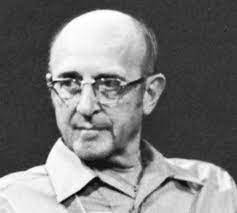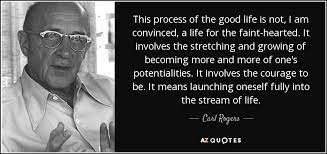Carl Rogers is perhaps the most loved and quoted theorist. Counselors still turn to him for inspiration in how to listen to clients empathically every day. This makes him well worth understanding.
This page covers the textbook in simple language for PYC2601 at Unisa. This will help us pass and succeed.
I hope it also helps us get inspired and get excited about this amazing man and his work.
Unisa is a wonderful opportunity – we are extremely fortunate to have it. But we do miss out. We miss out on the flirtation, the free exposure to art, the drinking, the hot lecturers, the tutorials, the magnificent libraries, the music and the freedom of a huge open mosh-pit of the mind that a real physical university can offer.
I hope this website and the linked videos help nourish us a tiny bit more.
Practice questions
QUESTION 1
In terms of Rogers’ theory, the self concept
- is fixed which allows an individual to experience a sense of continuity throughout the lifespan.
- is a representation of the value that individuals attach to themselves.
- is similar to the ideal self.
- is that fixed structure of personality which makes it possible for the individual to exercise freedom of choice.
[democracy id=”1″]
Answer
I had to take out the answers because of problems with student dishonesty. You can work out the answer from this webpage.
QUESTION 2
Samuel sees himself as a good son who could not possibly be attracted to the activities of some of his peers, such as smoking dagga. Samuel has included the value of his father of “if you are a good son you will not be attracted to socially unacceptable activities” in his view of what a good son should be. When Samuel enters high school, he experiences the intense wish to “break loose” and to experiment with dagga with his peers.
According to Rogers’ theory, Samuel .
- A) received unconditional positive regard from his father.
- B) received conditional positive regard from his father.
- C) incorporated a condition of worth into his self-concept.
- D) is likely to become a fully functioning person.
The correct answer is:
(1) (b)
(2) (b) & (c)
(3) (a) & (c)
(4) (a) & (d)
[democracy id=”1″]
Answer
#development-of-self-concept #conditions-of-worth
QUESTION 3
In terms of Rogers’ theory, Samuel is likely to function
- incongruently because his self-concept differs from his organismic experiences.
- congruently because he will tend to behave in accordance with his self-concept.
- congruently because his self-concept and true organismic potential are in accordance with one another.
- incongruently because his wish to experiment with dagga is in line with his self-concept.
[democracy id=”1″]
Answer
QUESTION 4
According to Rogers, the individual’s phenomenal field consists of .
- A) his subjective interpretation of external objects and events
- B) his emotional experiences
- C) events imagined even if not physically present
- D) events in his environment which he does not attend to The correct answer is:
(1) (a), (b) & (c)
(2) (a) & (c)
(3) (b)
(4) (a), (b), (c) & (d)
[democracy id=”1″]
Answer
- The phenomenal field is the field of everything in a person’s subjective reality of which they are aware. #proposition-2
According to Rogers, the actualising tendency is .
- the need to develop according to societal norms and standards.
- the value that one attaches to him/herself.
- The human being’s basic need for approval and appreciation.
- inherent tendency of organisms to expand or grow in order to become what they can be.
[democracy id=”1″]
Answer
4. The actualising tendency is the inherent tendency of organisms to expand or grow in order to become what they can be. #proposition-6
The humanistic-phenomenological school of thought
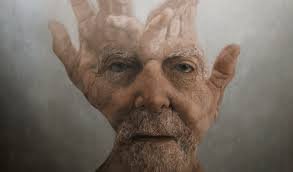
Phe no men o logical
Understanding a person’s inner experience of reality.
Understanding a person in terms of the meaning they give to themselves and their world.
This means the subjective experience of the person
Carl Roger’s Humanism is based on 3 assumptions:
- Phenomenology = subjective experience of self and the world
- Constructive potential = people have goals that shape their actions, feelings and thoughts.
- People change.
People find it easiest to change and reach their true potential when they are unconditionally accepted and feel free to develop.

Short biography
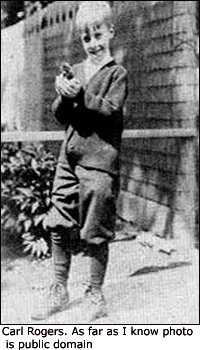
- Born in 1902
- Conservative and devout protestant family who moved to a farm.
- Strong religious biblical, but also scientific influence from his family
- A quiet sensitive child
- Started studying theology in 1924, but found it limited his freedom of thought.
- Changed his major to psychology and obtained his PHD in 1931.
- He worked right until his death at the age of 85 in 1987.
- In the last 15 years of his life he worked around the world in places of conflict: Northern Ireland, South Africa, Brazil, the Philippines and other countries
- He was happily married for 55 years.
Carl Rogers in South Africa
Used person-centred approach to work with groups of black and white participants. These workshops seem to have been discontinued according to a quick google search.
Basic beliefs about human beings:
- Phenomenology = subjective experience of self and the world
- Constructive potential = people have goals that shape their actions, feelings and thoughts.
- People change.
- Sometimes it is hard for people to change or to reach their goals due to an adverse environment in which they are not free.
Key Concepts
Most of this is the work of https://quizlet.com/AleaNicole on quizlet. I have simplified a sentence here and there and added 8 more.
| Term | Meaning |
|---|---|
| 1. Self-concept (The self) | The perceptions and meaning associated with the self,me,or I. |
| 2. Phenomenology | The study of human experience; in personality psychology, an approach to personality theory that focuses on how the person perceives and experiences the self and the world. |
| 3. Phenomenal field | The individual’s way of perceiving and experiencing his or her world |
| 4. Self-esteem | Esteem = value. The person’s evaluation of the self or personal judgement of worthiness |
| 5. Ideal Self | The self concept the individual would most like to possess. A key concept in Roger’s theory. |
| 6. Need for positive regard | The fundamental human need to be accepted and respected by other persons. |
| 7. Self-actualization | Actual = real, so to actualise is to make real, create, or manifest. The fundamental tendency of the organism to actualize, maintain, enhance itself and fulfill its potential. A concept emphasized by Rogers and other members of the human potential movement. |
| actualising potential |  |
| 8. Conditions of worth | Standards of evaluation that are not based on one’s own true feelings, preferences, and inclinations. And instead on others’ judgements about what constitutes desirable forms of action. |
| 9. Congruence | Roger’s concept expressing an absence of conflict between the perceived self and experience. Also, one of three conditions suggested as essential for growth and therapeutic progress. |
| 10. Incongruence | Roger’s concept of the existence of a discrepancy or conflict between the perceived self and experience |
| 11. Self-consistency | Roger’s concept expressing an absence of conflict among perceptions of the self. |
| 12. Distortion | A defensive process in which experience is changed so as to be brought into awareness in a form that is consistent with the self. |
| Distortion and photoshop in media |  |
| 13. Subception | A process emphasized by Rogers in which a stimulus is experienced without being brought into awareness. |
| 14. Denial | A defense mechanism, emphasized by both Freud and Rogers, in which threatening feelings are not allowed into awareness. |
| 15. organism | person or other living being |
| 16. differentiated | 1. To become distinct or specialized; acquire a different character. · 2. To make distinctions; discriminate. · 3. Biology To undergo differentiation during development or evolution. |
| differentiation |  |
| 17. Internal frame of reference | A person’s own desires, thoughts, feelings and phenomenological field. |
| 18. symbolisation | In social-cognitive theory, the ability to think about one’s social behavior in terms of words and images. —symbolize vb. For Rogers, ‘consciousness (or awareness) is the symbolization of some of our experience’, its ‘symbolic representation (not necessarily in verbal symbols)’—the three terms ‘awareness, symbolization, and consciousness‘ are used interchangeably. (1959, p. 198; 1951, p. 483). Source |
| 19. self-structure | How self-knowledge is organised |
| 20. organismic self | The true self – the total sum of a person’s experiences and predispositions on all levels. See also ideal self and self concept. |
| 21. organismic experience | All living entities with a central nervous system will encounter some form of organismic experience; an organism’s physiological senses will naturally respond to its internal and/or external experiences. |
| 22. Visceral feeling | When something’s visceral, you feel it in your guts. A visceral feeling is intuitive — there might not be a rational explanation, but you feel that you know what’s best. |
| 23. Gestalt | The form or shape of something. Includes the idea that the whole is greater than the sum of its parts. There is an emphasis on perception in this particular theory of counseling. Gestalt therapy gives attention to how we place meaning and make sense of our world and our experiences. |

The 19 Propositions
These are the key assumptions that underlie his theory and his practical work with clients. They are important. And they are in very difficult language, even for a native speaker. So let’s get stuck in…

- Every individual exists in a continually changing world of experiencing of which he is the centre. ie: Each person experiences a changing world in which they are the centre.
- The organism reacts to the field as it is experienced and perceived. This perceptual field is, for the individual, ‘reality’. ie: The human organism responds to this subjective perceptual field – it is reality for the person.
- The organism reacts as an organised whole to this phenomenal field = subjective external reality.

4. A portion of the total perceptual field gradually becomes differentiated as the self.
In other words, part of my reality is my sense of self.

5. The structure of self is formed resulting from interaction with the environment and from the evaluation of others.
This is an organised, fluid but consistent conception pattern of perceptions and values and relationships of the “I” to the environment and to others.
This means I create a sense of self from the environment, and according to other’s opinions.
This is fluid, but stable. And I see my own identity in terms of my values.

6. The organism has one basic tendency and striving – to actualise, maintain and enhance the experiencing organism. This means: You have an innate desire to grow, thrive and learn.
7. The best vantage point for understanding behaviour is from the internal frame of reference of the individual. This means: You need to understand someone’s behavior from the their point of view.

8. Behaviour is basically the goal-directed attempt of the organism to satisfy its needs as experienced in the field as perceived. This means people act to satisfy their needs as they personally experience them.
9. Emotion accompanies and in general facilitates such behaviour. The emotion is related to the perceived significance of the behaviour for the maintenance and enhancement of the organism.
This means: Emotion drives and goes with the behaviour. Emotions are about personal needs.

10. The values attached to experiences, and the values which are part of the self structure, in some instances are values experienced directly by the organism, and in some instances are values introjected or taken over from others, but perceived in a distorted fashion, as if they had been experienced directly.
This means: As we live, we build up a picture of ourselves, called the self-concept, from relating to and being with others and by interacting with the world.
Sometimes we believe other people’s version of reality and we absorb these values into our self-concept as though they were our own.

11. As experiences occur in the life of an individual, they are either a) symbolized, perceived and organized into some relationship to the self, b) ignored because there is no relationship to the self-structure, c) denied symbolization or given a distorted symbolization because the experience is inconsistent with the structure of the self.
This means: As I have experiences in life I can:
- relate to them as relevant to me
- ignore them
- deny that they matter, or distort them so they fit into my sense of who I am.

12. Most of the ways of behaving which are adopted by the organism are those which are consistent with the concept of the self. Meaning: Most of what we do matches who we think we are.

13. Behaviour may, in some instances, be brought about by organic experiences and needs which have not been symbolised. Such behaviour may be inconsistent with the structure of the self, but in such instances the behaviour is not ‘owned’ by the individual.
This means that: Sometimes we don’t understand our own behaviour because we haven’t recognised our needs and essential nature.

14. Psychological maladjustment exists when the organism denies to awareness significant sensory and visceral experiences, which consequently are not symbolized and organised into the gestalt of the self-structure. When this situation exists, there is a basic or potential psychological tension.

15. Psychological adjustment exists when the concept of the self is such that all the sensory and visceral experiences of the organism are, or may be, assimilated on a symbolic level into a consistent relationship with the concept of the self.
Meaning: When your reality and your actions are in harmony with who you are, then you feel integrated and comfortable in your own skin.

16. Any experience which is inconsistent with the organization or structure of self may be perceived as a threat, and the more of these perceptions there are, the more rigidly the self-structure is organized to maintain itself.
Meaning: When things don’t fit with our sense of self, we feel unsafe. The more unsafe we feel, the more we cling to our identity.

17. Under certain conditions, involving primarily complete absence of any threat to the self-structure, experiences which are inconsistent with it may be perceived, and examined, and the structure of self revised to assimilate and include such experiences.
This means: When we feel safe, we can take in experiences that challenge our sense of self and reality. So we can can change our self-concept and world-view.

18. When the individual perceives and accepts into one consistent and integrated system all his sensory and visceral experiences, then he is necessarily more understanding of others and is more accepting of others as separate individuals.
Meaning: When you have an integrated sense of self that is integrated with your world, then you can understand and accept others too.

19. As the individual perceives and accepts into his self-structure more of his organic experiences, he finds that he is replacing his value system – based so largely upon introjections which have been distortedly symbolized – with a continuing organismic valuing process.
Meaning: As you integrate your actual life into your sense of self, you value yourself more truly. You release false values that come from outside, and were not a good fit for you.
The structure of the personality
3 structural elements:
- The organism
- The phenomenal field
- The self-concept
Remember that the organism is the living being. The real self.
The phenomenal field is the personal subjective experience of the outside world and the inner world. The total field of experiences.
The self concept is the gestalt of the I or me.
The sense of self. It is the conscious aspect of self – not always at the forefront of the mind, but retrievable as needed. It is given value. It includes relates to the image that people have of themselves and how they act in all aspects of life.
Incongruence is deeply uncomfortable for a person. The self concept, the ideal self and the organismic or real self are all different and may even be at odds.
Part of the goal of therapy is to help people achieve congruence.
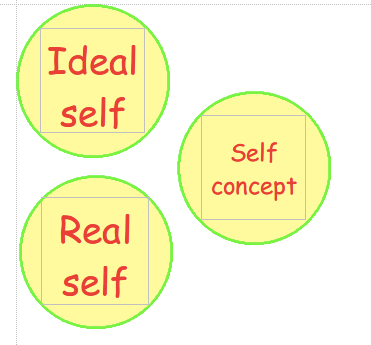
In a psychologically healthy person there is congruence between the self concept, the ideal self and the organismic self.

The dynamics of the personality
What drives behaviour? How does the personality work?
What drives behaviour?
- The actualising tendency. (Main drive)The inherent drive to grow, thrive and be the best you can be.
- The actualising tendency is broader than Maslow’s self-actualising, because we strive to actualise ourselves either congruently or uncongruently.
- We strive to actualise our organismic self, and/or our self -concept. This would be self-actualising for Carl Rogers. So it may be congruent with the organismic self or it may be incongruent.
- The need for positive regard
- The need for positive self-regard
These three motives for behaviour may also not be in harmony. For example, people can make choices that do not really suit them because they want the approval (positive regard) of their parents.
The values we take on from others are called conditions of worth. These can also lead to incongruity.


Denial: We may deny aspects of our real selves if they are incongruent.
Or we may use distortion as way to mask incongruence. Distortion is a defensive process in which experience is changed so as to be brought into awareness in a form that is consistent with the self.

Self Concept & Experience
Experiences may be:
- Ignored. Like I ignore the sport section of the news.
- Symbolised: Bring them into consciousness
- Refuse to symbolise the experience. Because it is contrary to the self concept. This may lead to subception. Remember subception is process in which a stimulus is experienced without being brought into awareness.

The development of the personality
Babies start life undifferentiated and without a self-structure. Gradually they learn how to meet their needs. Then over time, especially through interactions with others, they form a self-concept.
Over time we add meaning to our self-concept according to our experiences and the meanings and roles that others give to us.
The development of the self concept is influenced by two key factors:
- Unconditional positive regard: This means acceptance from others exactly as you are. This unconditionality give you the freedom to explore your potential and become fully actualised. You can realise all your innate abilities.
- Note: It is not necessary to accept all behaviour in order to accept the person unconditionally.
- Conditional positive regard: Positive regard is conditional on your acting and being what others approve of. This can act like blinkers on a horse, and restrict your potential.
Optimum development


3. Increasing organismic trust: trusting yourself and your visceral feelings.

4. Freedom of choice: Because people answer to themselves, not others, they are free to make their own choices.

6. Basic reliability and constructiveness. Because people are basically good, when they are actualised, they are benevolent and trustworthy
Psychopathology

Incongruence gives rise to maladaptive behaviour and anxiety. This threatens the self concept and gives rise to defence mechanisms:
- denial
- distortion
- subception
- rigid clinging to a false self – this can be a cumulative process that leads a person deeper and deeper into inauthenticity and falsehood.
- Carl Rogers actively avoided using labels such as neurotic, psychotic, and nowadays, that would be the latest fashion: narcissistic.
Psychotherapy
Person Centred Therapy
- Careful and attentive listening with little speech and much reflecting back the feelings you are hearing from the client.
- If you have practiced this listening, you will have experienced how effective it can be to help people understand themselves and move forward.
- Reflecting delicately and in an open ended way: “If I understand you correctly, her criticism is hurtful to you. Is that right?”
- So the client can then correct you freely or modify, or move on from that point comfortably.
- Person centred therapy can be used in education and commerce.
- The client takes responsibility for their own change.
- Not a patient, a client.
- The therapist is a facilitator.
- unconditional positive regard, warmth and empathy.The client should feel free and safe.
- transfer of power – empowerment
- create a growth facilitating climate (like a gardener)
- sincerity and congruence: be yourself and be visible – don’t hide what you are and what you feel. Part of this is not being too passive and silent – a little self-disclosure is very helpful to create trust and safety, because then the client can see who you are.
- unconditional positive regard: unconditional acceptance and caring
- empathy: listening for feelings and being aware of them – even those the client may not be conscious of.
- “Courage is a pre-requisite for empathic understanding.” Because listening deeply changes you.
- Observe from the client’s frame of reference: Step into their world and their reality, which may be very different from your own.
Aggression
This is the Rogerian take: Yes there is a lot of evil and aggressive behaviour. No this is not inherent in human nature. It is a product of a harmful environment, from birth onwards.
Healing takes place in an understanding and accepting atmosphere. When a person feels safe and whole and is in integrity with him or herself, there is no need for aggression.
If you really understand a person, their capacity for, and choice to be violent may make perfect sense to you, as it does to them.
More practice
QUESTION 1
Losita believes that she is from another planet and has come to visit the earth in order to save its inhabitants. She tells you that the reason her psychiatrist says she is psychotic is because she speaks in a language that human beings do not have the intellectual capacity to understand, and he is too defensive to admit his own ignorance and so rather regards her as having a mental disability. How would Rogers explain Losita’s behaviour?
- A) Rogers would understand Losita’s view of her psychiatrist as defensive, as her psychiatrist would need to protect his self concept against the incongruent experience that he may not be intelligent.
- B) Rogers would explain Losita’s psychosis as arising from a ‘defenseless state’ in which her incongruities became conscious, with her personality becoming disorganised as a result.
- C) Rogers would view Losita’s behaviour as proof of the malfunctioning that can occur when a person’s defense mechanisms no longer function effectively.
- D) Rogers would regard Losita’s behaviour as resulting from the use of denial as a way of dealing with her misconceptions rather than the more effective defense mechanism of distortion.
The correct answer is:
(1) (a) & (b)
(2) (b) & (d)
(3) (c) & (d)
(4) (b) & (c)
[democracy id=”1″]
Answer
This question needs to be teased out in some detail.
B definitely applies. When a person’s defence mechanisms no longer function effectively, a defenceless state arises in which incongruities exist and are conscious, and are incorporated into the self-concept in a disorganised way giving rise to psychosis.
A is true for Losita. She believes her psychiatrist is defending himself against knowing the truth. But this is not objectively true.
And C is also true. A defenceless state occurs when a person’s defences no longer function effectively.
Thandeka has been in corporate banking for the better part of her adult working life. She has been very successful and has advanced more rapidly than many of her colleagues. Despite her achievements, however, she does not feel fulfilled through her work. She feels more drawn to helping people realise their potential and ‘workshopping’ with them around personal growth issues. Eventually Thandeka takes the leap and resigns from her well-paid position in the banking industry to pursue her dream. While she feels apprehensive and fears some of the consequences of her choice, she also trusts implicitly that this is the right course for her to be taking. Which one of the following statements about the fully functioning person according to Rogers best describes Thandeka?
- Thandeka has gone through the process of growth required in order to realise her full potential and can expect to remain in the static bliss of ‘the good life’ for the rest of her life.
- Thandeka is functioning fully as she demonstrates the basic characteristic of being more open to society’s needs than her own, thereby enabling her to sacrifice her financial success in order to contribute more meaningfully to her community.
- Thandeka demonstrates the characteristic trait of the fully functioning person by being increasingly open to defending against being a conformist. In this manner she has managed to close herself off to certain external experiences in order to remain open to her internal experience of wanting to make this career change.
- Thandeka felt free to make this choice, as she feels increasingly able to trust her sense of what is right for herself as opposed to depending on existing codes and norms, which may dictate that a secure job is the better option.
[democracy id=”1″]
Answer
QUESTION 3
Alan has entered the stage of the so called ‘terrible two’s’ with the development of his will power leading him to throw tantrums. Which one of the following do you think most accurately reflects the advice that Rogers would give Alan’s parents?
- In order to accept Alan you need to accept his behaviour and find another way in which to cope with your own frustration at his tantrums, as opposed to limiting his free expression of self.
- Alan must be allowed to express all of his emotions openly, as only the unlimited expression of all his emotions will enable him to experience a sense of freedom.
- Let Alan know that you understand his feelings that he has the right to feel that way and that you love him no matter what, but that his tantrum behaviour is not acceptable.
- You should show resignation and defeat in response to Alan’s tantrums, as only when he sees that you feel powerless to change his behaviour will he begin to feel guilty and start choosing more constructive responses.
[democracy id=”1″]
As a young boy, Paul loved building things and taking them apart. As an adult, Paul decided to follow a career in engineering. In terms of Rogers’ theory, which one of the following deductions made from this story, is INCORRECT?
- His parents provided him with unconditional positive regard.
- His behaviour, to follow a career in engineering, is congruent with his true organismic potential.
- His parents provided him with conditional positive regard.
- He is actualising his potential by following a career in engineering
[democracy id=”1″]
Answer
This is a horrible question. We cannot actually in truth deduce anything. The most likely truth is that his behaviour is in congruence with his true potential. Less likely is that he is actualising his potential (which is still potentially true or untrue). Less likely is that his parents gave him unconditional positive regard and least likely although not deducable is that his parents gave him conditional positive regard.
If you know which answer UNISA favours, please put it in the comments box at the bottom of the page.
QUESTION 5
Which one of the following most accurately expresses the phenomenological dimension of Rogers’ view of the person?
- Thabo breaks his relationship off with Tracey as she is always limiting his freedom to be who he truly is.
- Lesiba has always wanted to be a teacher ever since he was a young boy and his mother appreciates the view he has of himself.
- Gerald values his mother’s opinion of him as it provides him with an objective view of himself.
- Paul’s sister subjectively experiences him as a compassionate person, which has strongly influenced Paul’s view of their mother as compassionate.
[democracy id=”1″]
Answer
The person is at the centre of their own experiences, and the way that others sees them becomes part of that constructed reality. #phenomenological #proposition-5


